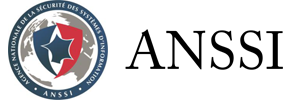Motivation
Recent records have demonstrated that breaking the RSA cryptosystem could be cheaper than initially expected (e.g., the record on 795-bit keys using Cado-NFS software in 2020). Accurately assessing the security of such a widely deployed cryptosystem is of paramount importance in determining the size of keys that should be used in everyday devices or in governmental products.
While post-quantum schemes will likely replace current cryptosystems in a few decades, it is important to accurately assess how long current products, with potentially very long lifecycles, will remain secure.
Objectives
With partners either already involved in recent records, or directly concerned by the precise measurement of the security of the cryptosystems deployed, the KLEPTOMANIAC project can be split into three main objectives.
First, the partners aim to determine accurate hardness estimates for the RSA cryptosystem and the Diffie-Hellman key exchange protocol in finite fields. Similarly, they aim to determine accurate hardness estimates for elliptic-curve cryptosystems relying on small-degree extension fields, especially for key sizes relevant for zero-knowledge proofs used by current blockchain technology. Finally, the idea will be to build simulation tools to calculate previous estimates and which can be easily adapted in the event of a new breakthrough.





